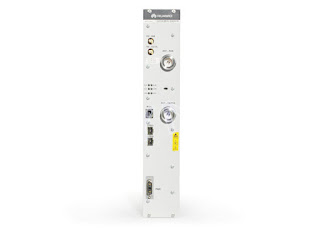MSC
Mobile Switching Center (MSC)
What does Mobile Switching Center (MSC) mean?
A mobile switching center (MSC) is the centerpiece of a network switching subsystem (NSS). The MSC is mostly associated with communications switching functions, such as call set-up, release, and routing. However, it also performs a host of other duties, including routing SMS messages, conference calls, fax, and service billing as well as interfacing with other networks, such as the public switched telephone network (PSTN).
The MSC is structured so that base stations connect to it, while it connects to the PSTN. Because cellphones connect to these base stations, all forms of communication, whether between two cell phones or between a cell phone and a landline telephone, travel through the MSC.
The MSC is structured so that base stations connect to it, while it connects to the PSTN. Because cellphones connect to these base stations, all forms of communication, whether between two cell phones or between a cell phone and a landline telephone, travel through the MSC.
Techopedia explains Mobile Switching Center (MSC)
A small network operator may employ only one MSC, while a large operator requires multiple MSCs. The MSC plays a significant role in handovers, particularly handovers involving multiple base station controllers - known as inter-BSC or intra-MSC handovers - as well as those involving multiple MSCs, known as inter-MSC handovers.
In an inter-BSC handover and upon detecting that a mobile device is approaching the edge of its cell, a BSC requests handover assistance from its MSC. The MSC then scans a list of adjacent cells and their corresponding BSCs and facilitates the handover to the appropriate BSC.
As mobile phones move, it is important for the MSC to determine each phone’s location to effectively facilitate routing communications between them. For this task, the MSC works with a large database known as the home location register (HLR), which stores relevant location and other information for each mobile phone.
Because accessing the HLR uses many network resources, most operators employ visitor location registers (VLRs). These are relatively smaller databases, which are integrated with the MSC. Some carriers deploy one VLR per MSC, while others set up one VLR to serve multiple MSCs
In an inter-BSC handover and upon detecting that a mobile device is approaching the edge of its cell, a BSC requests handover assistance from its MSC. The MSC then scans a list of adjacent cells and their corresponding BSCs and facilitates the handover to the appropriate BSC.
As mobile phones move, it is important for the MSC to determine each phone’s location to effectively facilitate routing communications between them. For this task, the MSC works with a large database known as the home location register (HLR), which stores relevant location and other information for each mobile phone.
Because accessing the HLR uses many network resources, most operators employ visitor location registers (VLRs). These are relatively smaller databases, which are integrated with the MSC. Some carriers deploy one VLR per MSC, while others set up one VLR to serve multiple MSCs



Comments
Post a Comment